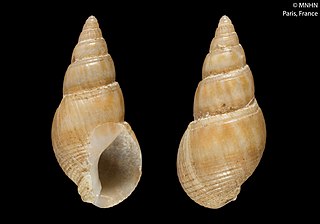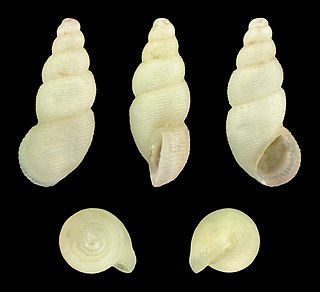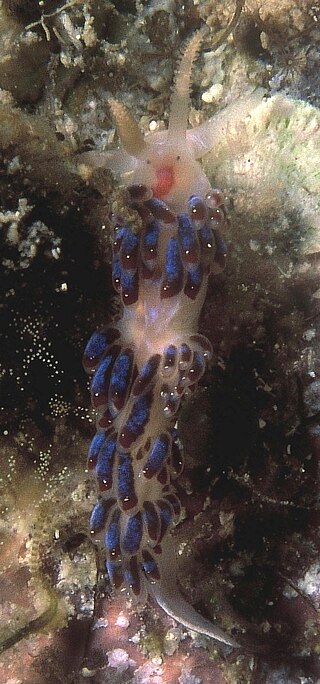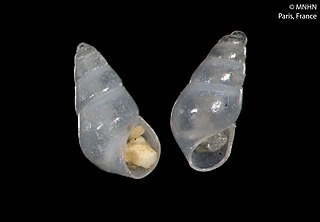
Turritriton labiosus, also known as Cymatium labiosum, is a species of predatory sea snail, a marine gastropod mollusc in the family Cymatiidae.

Caloria is a genus of colorful sea slugs, aeolid nudibranchs. They are marine gastropod molluscs in the family Facelinidae.

Caloria indica is a species of sea slug, an aeolid nudibranch, a marine gastropod mollusc in the family Facelinidae.

Aplysiopsis elegans is a species of sacoglossan sea slug, a shell-less marine opisthobranch gastropod mollusc in the family Hermaeidae.

Phidiana is a genus of sea slugs, aeolid nudibranchs, marine gastropod molluscs in the family Facelinidae.

Oenopota elegans is a species of sea snail, a marine gastropod mollusk in the family Mangeliidae.

Tritia elata is a species of sea snail, a marine gastropod mollusc in the family Nassariidae, the Nassa mud snails or dog whelks.

Seguenzia elegans is a species of sea snail, a marine gastropod mollusk in the family Seguenziidae.

Alvania marchadi is a species of minute sea snail, a marine gastropod mollusk or micromollusk in the family Rissoidae.

Alvania zylensis is a species of minute sea snail, a marine gastropod mollusk or micromollusk in the family Rissoidae.

Onoba aculeus, common name the pointed cingula, is a species of minute sea snail, a marine gastropod mollusk or micromollusk in the family Rissoidae.
Onoba obliqua is a species of minute sea snail, a marine gastropod mollusk or micromollusk in the family Rissoidae.
Setia latior is a species of minute sea snail, a marine gastropod mollusk or micromollusk in the family Rissoidae.
Megalomphalus disciformis is a species of very small sea snail, a marine gastropod mollusk in the family Vanikoridae.

Facelina is a genus of sea slug, an aeolid nudibranch in the family Facelinidae.
Liamorpha elegans is a species of sea snail, a marine gastropod mollusk in the family Pyramidellidae, the pyrams and their allies.

Rissopsetia is a genus of sea snails, marine gastropod molluscs in the family Pyramidellidae.

Odostomia kromi is a species of sea snail, a marine gastropod mollusc in the family Pyramidellidae, the pyrams and their allies.
Caloria quatrefagesi is a species of sea slug, an aeolid nudibranch, a marine gastropod mollusc in the family Facelinidae.













